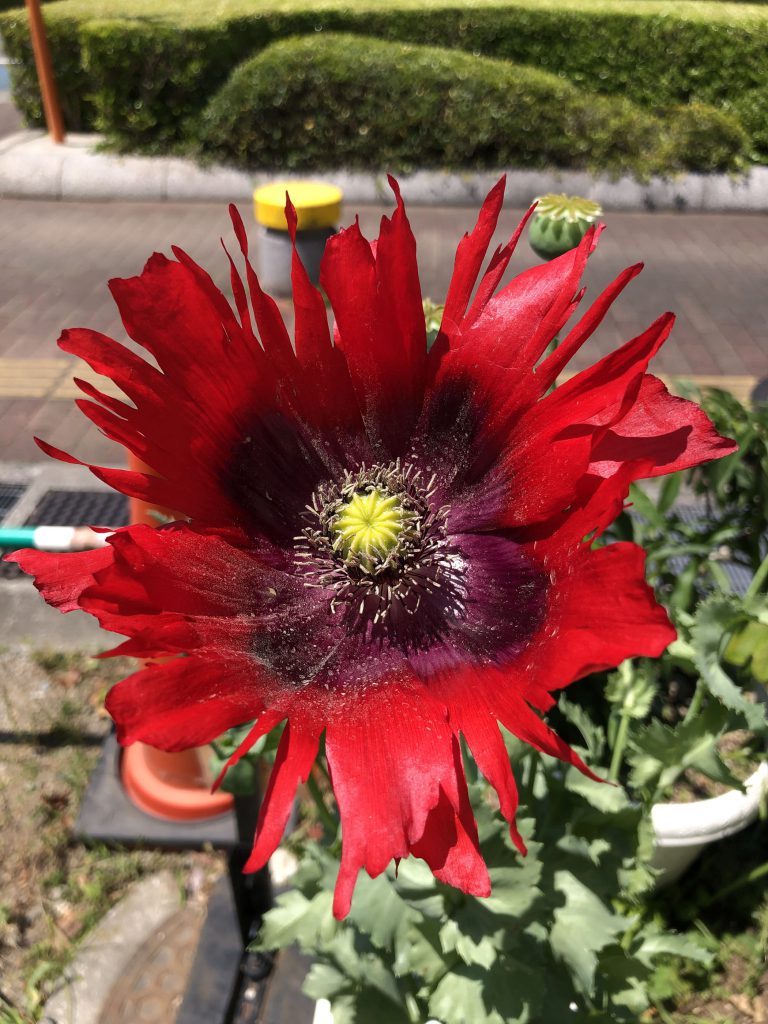
The crimson poppy flowers are swaying to the right and left, fanned by strong winds. The large round petals are cut everywhere, probably because they were eaten by insects. It’s like a gerbera petal. Still, it retains its original bewitchingness, which makes it even more pitiful. Wakurabana(Illness flower) is my coined word. There is a word called “wakuraba”, but there is no way to read “disease” as “wakura”. The word “wakuraba” has been around since the Manyo era, and there are two ways to write it in kanji: “病葉(sick leaf)” and “邂逅(encounter)”. 病葉, “sick leaf”, is a yellowed and dying leaf, and 邂逅, “encounter”, is now read as “kaikou” and means “unexpected encounter” and “meeting”. “Sick leaves” and “encounter” are words that have no connection now, but in the Manyo era there was some connection and it may have been called “wakuraba”. My “Sick flowers” may also take root.
強い風に煽られて深紅のケシの花が右に左に揺れています。丸い大きな花びらが虫に食われたのか、至る所が切れ込んでいます。まるでガーベラの花びらのようです。それでも元の妖艶さをとどめていて、それがいっそう哀れさを感じさせます。病花(わくらばな)は私の造語です。病葉(わくらば)と言う言葉がありますが、「病」には「わくら」と言う読み方はありません。「わくらば」と言う言葉は万葉時代からあって、それを漢字で書くと「病葉」と「邂逅」の二通りがあります。「病葉」は黄ばんだ枯れかけの葉のことで、「邂逅」は今は「かいこう」と読んで「思いがけなく出会うこと」「めぐり会うこと」を意味します。「病葉」と「邂逅」は今では何の繋がりがない言葉ですが、万葉時代にはなんらかの繋がりがあり「わくらば」と言ったのかも知れません。「病花」も定着するかも知れません。
